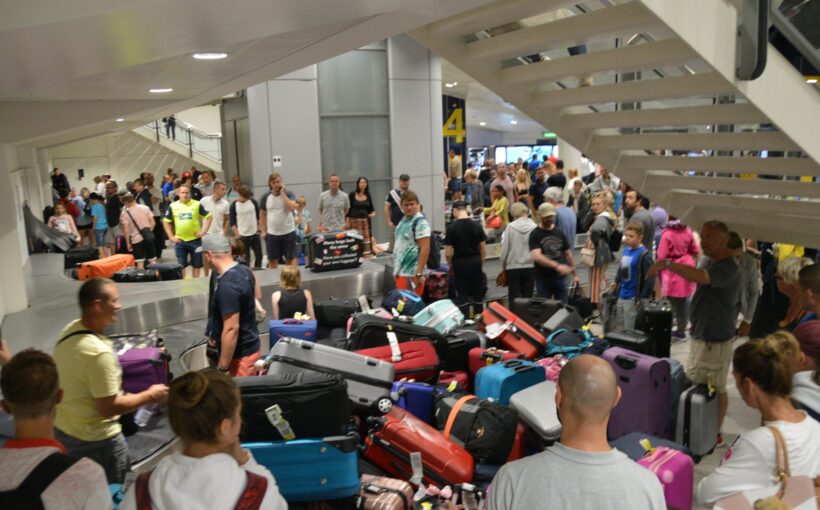Europe stands at a critical juncture, with politicians, economists and businesses raising alarms that overregulation and underinvestment threaten to undermine our global competitiveness.
What is essential now is balancing growth, sustainability and prosperity amid rising international challenges. That is the path called for in the Draghi and Letta reports, the latest high-profile assessments stressing swift reforms to ensure sustained vitality and relevance for Europe.
Ready to contribute is the business aviation industry, which flies where others can’t, generating €100 billion annually, supporting hundreds of thousands of jobs and accelerating the industry’s decarbonisation efforts through use of more sustainable fuels and innovative efficiency improvements.
But its economic engine is at risk. European regulators are contemplating increased taxes and flight restrictions on business aviation, a misguided strategy that could cripple this vital enabler of the EU’s single market and its four fundamental freedoms.
At first glance, raising taxes on aviation might seem like a clever way to prop up government budgets and address environmental concerns. But when all its repercussions are considered more in-depth, the proposed changes could backfire significantly.
The short-sighted measures under discussion include French Prime Minister Barnier’s proposal to triple France’s ‘solidarity tax,’ first introduced in 2006, for all commercial airfares. If approved, it would be applied to commercial business aviation flights at a spectacular €3,000 per passenger rate on long-haul flights.
Its economic engine is at risk. European regulators are contemplating increased taxes and flight restrictions on business aviation, a misguided strategy that could cripple this vital enabler of the EU’s single market and its four fundamental freedoms
Pitfalls of regulatory overreach
Far from boosting competitiveness, these ideas could end up dismantling a lifeline that pumps energy into local economies.
Business aviation creates a cascade of jobs – from aircraft designers and manufacturers to pilots, mechanics and airport staff.
And, with its point-to-point travel options, business aviation enables travellers to fly directly to hundreds of airports that are not reached, either directly or at all, by commercial airline services. That provides quick, flexible travel solutions for companies, particularly those with multi-site operations or in underserved regions.
The sector’s impact extends far beyond its immediate transportation benefits, as outlined in the “European Business Aviation Manifesto” we published with the European Business Aviation Association (EBAA). It highlights business aviation’s safety and sustainability-enhancing new technologies that ultimately scale up to commercial airliners.
Business aviation manufacturers spend €3 billion a year on technology and more efficient aircraft. Significant investments are already being made in sustainable aviation fuels (SAF), electric and hybrid-electric aircraft and hydrogen-powered propulsion systems.
By collaborating with the industry on technology advancements, European governments can achieve a more balanced and effective approach to reducing aviation’s carbon footprint.
Instead, misplaced measures against business aviation could lead to troubling outcomes.
Financial slump: New taxes and flight limits that some countries are considering would weaken and reduce business aviation’s economic contributions. By making it prohibitively expensive, France may prompt businesses to relocate or conduct operations elsewhere, leading to a loss of jobs and tax revenue in the long run.
Capping short-haul flights and placing slot restrictions on business aviation in certain airports would make Europe a far less attractive destination for doing business. That would mean fewer greenfield investments in economically disadvantaged regions only served by business aviation.
Europe has many industrial clusters near airports and airfields with limited or no commercial air services, such as Clermont-Ferrand Auvergne Airport in France, Győr-Pér Airport in Hungary and Braunschweig-Wolfsburg Airport in Germany. Business aviation serves as a primary tool for expanding the economic appeal of these regions by providing crucial connectivity.
Environmental fallout: The business aviation sector leads the way in aviation’s future, promoting cutting-edge solutions to reduce harmful emissions.
Efficiency improvements, now standard across the industry, include winglets – vertical extensions on wings – that reduce fuel consumption on business jets and commercial airliners. The industry also has pioneered lightweight avionics for fuel savings and sophisticated vision systems for more efficient flight routing.
As for decarbonisation, the industry has committed to ambitious goals, aiming for net-zero emissions by 2050. But unwarranted taxes could hinder investments in sustainable fuels and the development of next-generation technology, such as electric and hybrid-electric aircraft and hydrogen-powered propulsion systems.
As for decarbonisation, the industry has committed to ambitious goals, aiming for net-zero emissions by 2050. But unwarranted taxes could hinder investments in sustainable fuels and the development of next-generation technology
Time to rethink
European governments should look to Sweden, which plans to abolish its aviation tax to stimulate growth. A broader tax base through pro-growth policies is more sustainable than burdening productive sectors. Similarly, the Dutch government reversed flight limits at Amsterdam Airport Schiphol, acknowledging aviation’s economic importance.
The recent Draghi and Letta reports offer a timely opportunity to reassess strategies for bolstering European industries and their global competitiveness. Instead of blunt tax and flight restrictions, our industry is eager to engage in dialogue that aligns economic and environmental goals while fostering strong public-private partnerships.
The sky’s the limit when it comes to finding creative and balanced solutions. Our industry is ready to support the competitiveness of the European economy and lasting sustainability efforts. Are European policymakers and leaders?



